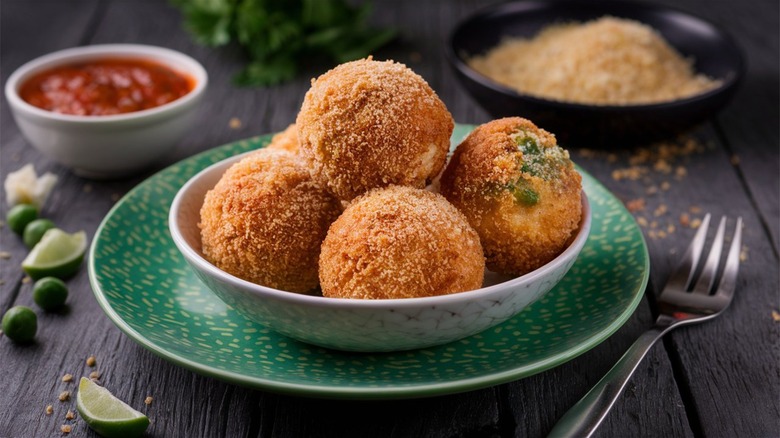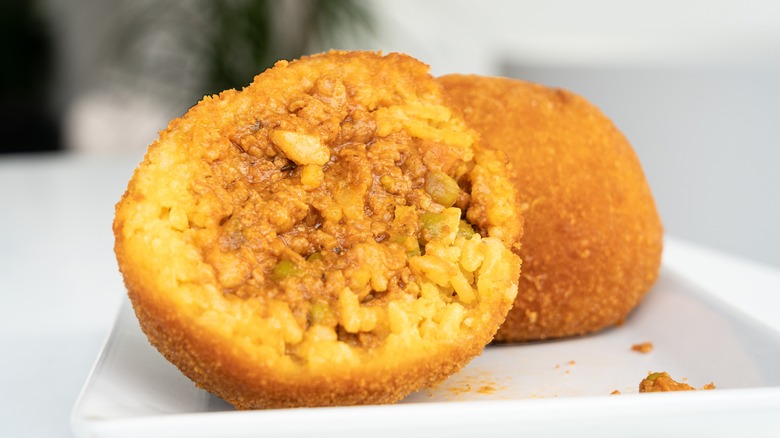How To Cook Arancini With The Absolute Best Texture
Almost anywhere you go in Southern Italy, you'll find arancini, one of the country's most popular street foods. Originating in Sicily, these "little oranges" are famous for their crunchy exterior that gives way to toothsome rice surrounding gooey cheese or savory meat ragù. Arancini are easy to make, but getting that perfect crispy texture can be tricky.
Jasper J. Mirabile, Jr. is the chef and owner of Jasper's Restaurant in Kansas City, Missouri, where his family has been serving delectable Italian cuisine since 1954. He's also the host of Live! From Jasper's Kitchen on KCMO Talk Radio, so he's the ideal expert to consult about making the best arancini. Traditional arancini recipes begin with risotto, and chef Mirabile concurred. He told us, "I highly recommend only using risotto rice such as Arborio or Carnaroli, which has a creamy texture that helps retain moisture." Although the difference between Arborio and Carnaroli is minimal, the Northern-Italy-grown Carnaroli rice is often preferred for its texture and creaminess in risotto.
Another important tip that Mirabile shared is heating the frying oil to 350 degrees Fahrenheit. "If the oil is too hot, the outside will brown too quickly and the inside might not heat through," he explained. "If the oil is too cool, the arancini will absorb too much oil and become greasy." Once the arancini are fried golden-brown, Mirabile lays them on a wire rack or paper towels to drain excess oil. He says, "This helps the outside stay crisp without becoming soggy."
The type of frying oil matters when cooking arancini
The frying oil also plays a part in achieving photo-worthy arancini. Canola oil, sunflower oil, or grapeseed oil are neutral-tasting and have a high smoke point, but even budget-friendly corn oil can fry arancini to perfection. The most accurate way of regulating the oil's temperature to Mirabile's recommendation of 350 degrees Fahrenheit is by using a digital meat thermometer. If you don't have one, a neat trick is to place the tip of a chopstick or the handle of a wooden spoon into the oil. If the oil bubbles around the tip of the chopstick or spoon, then the oil is at approximately 350 degrees Fahrenheit. But if the oil bubbles aggressively, the oil is too hot.
According to Mirabile, though, you don't always have to cook arancini in just oil. "Sometimes, I partially fry the arancini until they are lightly golden, then finish them off in the oven at 350 degrees Fahrenheit (175 degrees Celsius) for 5-10 minutes," he told us. The first recipes for arancini from the 19th century were more like pastries stuffed with sweet fillings. When tomato sauce became popular, arancini were made savory. Arancini fillings vary from region to region in Italy, but many are filled with cheese or meat ragu and served with tomato sauce. Whichever arancini recipe you choose, follow chef Mirabile's advice for achieving the best texture.

